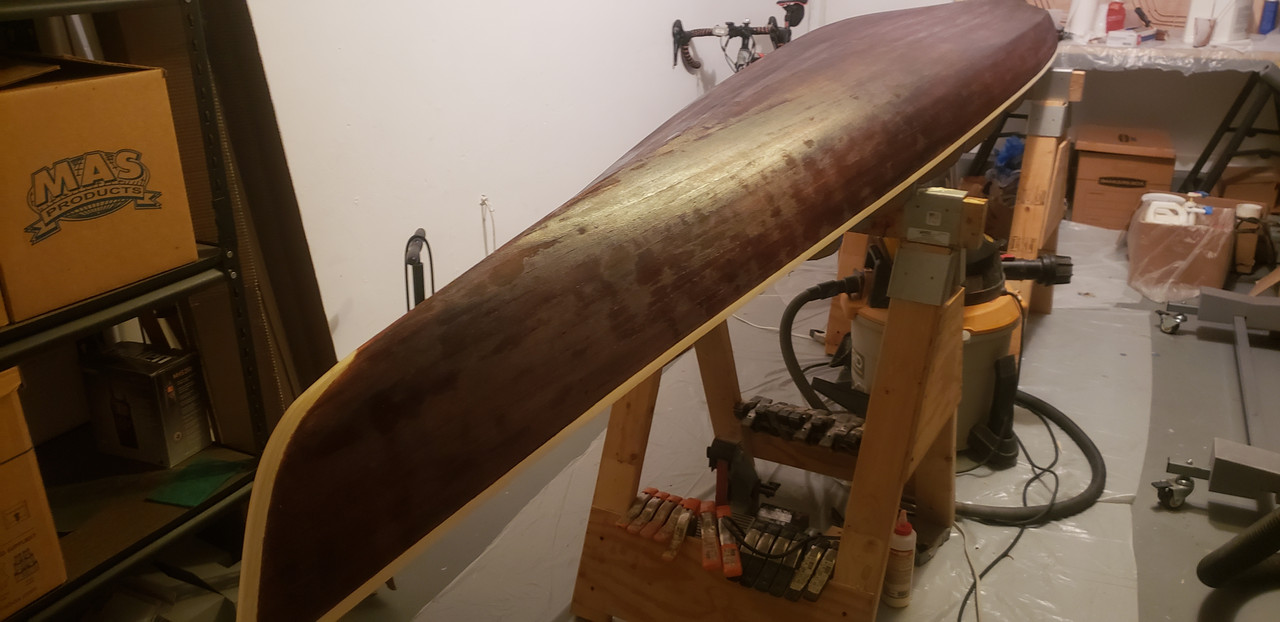Hi geophile,
i am sure other's will chime in but yes, it's true. the standard response to prevent things from heating up too quick is to work in smaller batches. that said, i can appreciate the how odd that can sound especially when you have a lot of glassing to do. it's also particurly challenging to do this as we move into the summer months and if you are in warmer cliamtes. so let me offer some additional ideas.
first, you will learn and practice during boat building what you can do. the factors in addition to how much epoxy you work with in one session that you can typically control that allow you to use larger quantities:
control the temperature. work when it is cooler - early mornings are best for the lowest temperature of the day. 60 degrees is a great temperature to work at when you have a lot of epoxy work to get done. you can also check the forecast and see if there are some cool 70 degree days coming and move your work to a cool day vs working during a heatwave. fwiw, i always have a thermometer in my work area to have awareness of temperature. over time, it has helped me learn what is possible.
control the chemistry. if you are not working with slow hardener, seriously consider getting epoxy slow hardener to buy yourself time.
avoid keeping the mixed epoxy in small containers. as soon as you mix epoxy, try to get it out of any container like a cup as soon as possible. its a large mass of epoxy that can kick very quickly and dangerously (e.g., the smoking hockey puck). getting it out and on the boat prevents this phenomenon.
learn to work quick. learn to mix your epoxy quick and effectively....and learn to get it on the boat quick and work quickly....so you can get your work done in whatever time you end up having. having another pair of hands can help you work quickly. but as important, just get used to timing yourself and be prepared. by be prepared, i mean do everything in advance you possibly can to set things up so you are litterally going from mixing, to pouring it on the boat, to using your squeegee or whatever you are using to move the epoxy around without delay and in as short a time as possible.
consider a skim coat to break the work up into more manageable chunks. a skim coat is a quick coat of epoxy on the wood with no glass. oftern done a day in advance. the skim coat fills the pores in the wood so that when you do apply glass, it wets out faster becuase the wood is already sealed. it allows you basically to work faster once you do work with glass. a skim coat has he added advantage of sealing the wood from outgassing. in general (not withstanding my recommendation to work in the morning) to have high quality glass work, you don't want your first coat of epoxy on bare wood under glass to happen during rising temperature as the wood will blow bubbles into your epoxy. so the skim coat allows you to work in the morning when the temperature is going to rise, becuase you have now sealed the wood.
anywa, i realize this is a long message. but through mastering all these factors, you will sort out how many ounces or pumps of epoxy you can reasonably do at a time without something bad happening.
during summer, last year, i applied all of these including drafting my nephew to focus on mixing while i just focused on applying epoxy and wetting out cloth. so he dispense epoxy quickly and would mix (100 seconds) of 20 oz at a time and pour all the mixture on the hull, where i then moved it around and got the glass wet out. we then reduced the size down to as little as 6 oz as we got towards the end of the work where i simply could not take as much epoxy at a time.
i hope this helps
h
